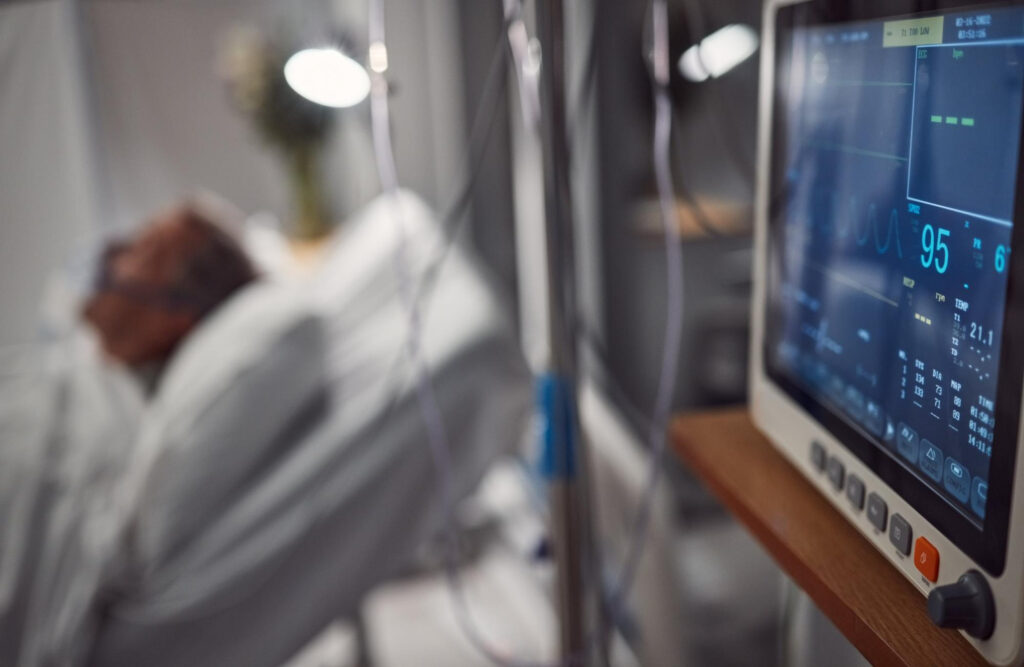ICU procedures are among the most commonly billed services in critical care. Accurate Medicare Benefits Schedule (MBS) claiming requires more than just knowing the right item number — it demands an understanding of bundled services, exclusion rules, and documentation standards.
In this instalment of our Navigating the Maze series, we guide you through the procedural items most commonly claimed in intensive care settings. Although this list of ICU procedures is by no means exhaustive, it is a comprehensive starting point.
ICU Procedures List – A Practical Breakdown
We break the items into four practical groups:
🔹 Vascular Access
🔹 Respiratory Procedures
🔹 Cardiovascular Procedures
🔹 Other Miscellaneous Procedures
We’ll also unpack some commonly questioned aspects of procedural billing:
- ⚖️ Applying the Multiple Operation Rule
- 🧑⚕️ Procedures Performed by Supervised Specialist Trainees
- 🔄 The correct application of the Complete Medical Service principle
- ➕ The rules for Multiple Identical Procedures
- 🔊Claiming real-time Ultrasound Guidance
💉 1. Vascular Access Procedures
Among the common items for ICU procedures, vascular access is a key part of daily intensive care. Here’s what you need to know:
13815 – Central Venous Cannulation
Central vein catheterisation, including under ultrasound guidance where clinically appropriate, by percutaneous or open exposure
Includes:
- Central venous lines
- PICC lines (explicitly specified)
- Vascaths
- Sheaths
Related items:
- 13318 Central vein catheterisation by open exposure, in a patient under 12 years of age
- 13319 Central vein catheterisation in a neonate via peripheral vein
🚫 MidLines are excluded – the catheter tip must terminate in a central vein.
🚫 Can NOT claim for Ultrasound Guidance
13842 – Arterial Cannulation
Intra‑arterial cannulation, including under ultrasound guidance where clinically appropriate, for the purpose of intra‑arterial pressure monitoring or arterial blood sampling (or both)
🚫 Can NOT claim for Ultrasound Guidance
13818 – Pulmonary Artery Catheter Insertion
Right heart balloon catheter, insertion of, including pulmonary wedge pressure and cardiac output measurement
💡Note: 13818 is the correct, ICU specific item for pulmonary artery catheter (PAC) insertion.
Item 38200 is intended for right heart catheterisation in a Cardiology / Cardiothoracic setting.
💡Note: This item can only be claimed on more than one occasion in a day if a new procedure takes place. Re-floating the balloon would not be considered a new procedure. See MBS advisory notes TN.1.10 and the rules for Multiple Identical Procedures
✅ Can claim for Ultrasound Guidance

🌬️ 2. Respiratory Procedures
Respiratory interventions form another core category within the ICU procedures list.
13881 – Intubation
Airway access, establishment of and initiation of mechanical ventilation, in an Intensive Care Unit, not in association with any anaesthetic service, by a specialist or consultant physician for the purpose of subsequent ventilatory support.
Related items
- 13857 Airway access, establishment of and initiation of mechanical ventilation (other than in the context of an anaesthetic for surgery), outside an Intensive Care Unit, for the purpose of subsequent ventilatory support in an Intensive Care Unit
💡Note: Item 13857 covers intubation outside of Intensive Care, for the purposes of subsequent ventilation in intensive care. This item may not be claimed in the context of anaesthetic services being provided to the patient (it is not intended to be claimed for intubation for an anaesthetic) however this restriction can sometimes result in unexpected rejections if anaesthetic items are also claimed for the same day. When claiming this item, appropriate service text is essential, The MBS rebate for these two items is identical.
38800 – Diagnostic Pleural Tap
Thoracic cavity, aspiration of, for diagnostic purposes, not being a service associated with a service to which item 38803 applies.
✅ Can claim for Ultrasound Guidance
38803 – Therapeutic Pleural Tap
Thoracic cavity, aspiration of, with therapeutic drainage (paracentesis), with or without diagnostic sample.
✅ Can claim for Ultrasound Guidance
38828 – Intercostal Catheter / Chest Drain
Intercostal drain, insertion of:
(a) not involving resection of rib; and
(b) excluding aftercare; and
(c) other than a service associated with a service to which item 38815, 38816, 38829, 38830, 38831, 38832, 38833 or 38834 applies.
💡 Note: These three items (38800, 38003, 38828) should be used progressively depending on the intervention. See application of the Complete Medical Service principle below — they must not be co-billed when one is a component of the other.
💡The items listed under point c) are thoracic surgical procedures (e.g. thoracoscopy, pleurodesis, ect) where insertion of a chest drain forms part of the more complex procedure. These items are not relevant to Intensive Care.
✅ Can claim for Ultrasound Guidance
38419 – Bronchoscopy
Bronchoscopy, as an independent procedure
38420 – Bronchoscopy + procedure
Bronchoscopy with one or more endobronchial biopsies or other diagnostic or therapeutic procedures
💡Note: This is the appropriate item to use if bronchial lavage, bronchial washings or biopsies are performed.
41880 -Percutaneous Tracheostomy
Tracheostomy by a percutaneous technique
💡 Note: Bronchoscopy used solely to confirm the tracheal puncture would be considered part of the procedure – see application of the Complete Medical Service principle below. Bronchoscopy to examine the distal airway, perform lavage or collect endobronchial washings or to remove blood or other foreign material would be considered a billable procedure. If billing for bronchoscopy (38419, 38420) on the same day, procedure times, service text and documentation is essential.
✅ Can claim for Ultrasound Guidance
❤️ 3. Cardiovascular Procedures
The cardiovascular ICU procedures list includes some critical high-stakes interventions:
13400 – Cardioversion
Restoration of cardiac rhythm by electrical stimulation (cardioversion), other than in the course of cardiac surgery
38256 – Temporary Pacing Wire Insertion
Temporary transvenous pacemaking electrode, insertion of
✅ Can claim for Ultrasound Guidance
38359 – Pericardiocentesis
Pericardium, paracentesis of (excluding aftercare)
✅ Can claim for Ultrasound Guidance
38362 – Intra Aortic Ballon Pump (IABP) Insertion
Intra‑aortic balloon pump, percutaneous insertion of
✅ Can claim for Ultrasound Guidance
38376 – Left Ventricular Microaxial Blood Pump (Impella) Insertion
Percutaneous insertion of an intravascular microaxial ventricular assist device, into the left ventricle only, by arteriotomy, including all associated intraoperative imaging
See our detailed article on item numbers relating to Left Ventricular Microaxial Blood Pump (Impella)
🚫 Can NOT claim for Ultrasound Guidance (intraoperative imaging included in item description)
13832 – Cannulation for VA ECMO
Peripheral cannulation, including under ultrasound guidance where clinically appropriate, for veno‑arterial cardiopulmonary extracorporeal life support
🚫 Can NOT claim for Ultrasound Guidance
13840 – Cannulation for VV ECMO
Peripheral cannulation, including under ultrasound guidance where clinically appropriate, for veno‑venous pulmonary extracorporeal life support
🚫 Can NOT claim for Ultrasound Guidance

🧰 4. Other Miscellaneous ICU Procedures
Here are other important ICU procedures to know:
13506 – GI Ballon (SB Tube) Insertion
Gastro‑oesophageal balloon intubation for control of bleeding from gastric oesophageal varices (H).
13706 – Transfusion
Transfusion of blood or bone marrow already collected
🩸 Includes:
- Blood
- Platelets
- White blood cells
- Bone marrow
- IVIg
🚫 Does not include plasma products.
💡Note: Only two separate transfusion episodes per calendar day will be paid, regardless of the number of transfused units. For clarity, transfusion of two units of blood back to back counts as one transfusion episode. Not Duplicate Service annotation, times and service text required.
➕ The rules for Multiple Identical Procedures
30406 – Paracentesis
Paracentesis abdominis
✅ Can claim for Ultrasound Guidance
41677 – Nasal Packing
Nasal haemorrhage, arrest of during an episode of epistaxis by cauterisation or nasal cavity packing or both.
39000 – Lumbar Puncture
Lumbar puncture
✅ Can claim for Ultrasound Guidance
🧑⚕️ TN.1.20 – ICU Procedures Performed by Supervised Specialist Trainees
Therapeutic procedures listed in this blog and billed under items 13015 to 51318 may be performed by a specialist trainee, provided they are under direct supervision. Exclusions apply to item numbers relating to consultations and Botox injections in this MBS item number range (13209, 16400 to 16500, 16590 to 16591, 17610 to 17690, 18350 to 18373)
A service provided by a specialist trainee is taken to have been performed by the supervising practitioner, and is billed as such.
🔍 Key definitions under TN.1.20:
- Specialist trainee: A medical practitioner enrolled in an AMC-accredited Medical College Training Program
- Direct supervision: The supervisor must provide personal and continuous attendance for the entire duration of the procedure
✅ This means procedures like central lines, pleural taps, tracheostomies, and other ICU procedural items performed by registrars can be billed — as long as supervision is active and documented.
⚖️ TN.8.2 – Multiple Operation Rule
The Multiple Operation Rule TN.8.2 applies to Category 3 Group T8 items (excluding amputations).
If multiple such items are performed on the same day for the same patient, at the same time, only the highest fee item is paid in full, with others reduced sequentially by 50% and 75%.
📌 If the claimed ICU procedures were performed at discretely different time points, all items can be paid in full. In this case ensure:
- Multiple Procedures Override annotation is added
- Procedure times are included
- Service text is provided
🔄 GN.14.34 — The Complete Medical Service principle
“Each professional service listed in the MBS is a complete medical service. Where a listed service is also a component of a more comprehensive service covered by another item, the benefit for the latter service will cover the former.”
In practice, this means you cannot bill multiple overlapping items.
🫁 Example:
If an intercostal drain is inserted (38828), it already includes:
- Therapeutic pleural aspiration (38803)
- Diagnostic pleural aspiration (38800)
The increasing complexity is reflected in the increase in rebate.
Do not bill all three — only the most comprehensive item applies.
Likewise, 38803 includes 38800, and they must not be billed together.
➕ Multiple Identical Procedures (Not Duplicate Service)
Some ICU procedures can occur more than once per day. For example:
- 13815 may be used for a CVC and a Vascath, if both are inserted on the same day.
📝 To claim both:
- Mark both items as Not Duplicate Service
- Record distinct procedure times
- Provide service text to clearly identify the procedure undertaken
Even when rules are followed, rejections for duplicate items are common — documentation is critical.
🔊 Ultrasound-Guided Procedures
In 2020, the MBS was revised to incorporate ultrasound guidance into specific vascular access items, meaning separate billing for ultrasound guidance is no longer permitted with those items. The consideration behind this was that using ultrasound for these procedures would be considered standard of care and it brings these items in line with similar restrictions established in 2012 for ultrasound guided procedures during anaesthesia.
For other procedures where real-time ultrasound guidance has not been restricted, the relevant ultrasound item (55054) may still be co-claimed. For these procedures ultrasound is not routinely used. In some complex cases ultrasound guidance is required not only to guide percutaneous puncture but also to ensure safe manipulation or deployment of devices or catheters during the procedure. Often multiple probes and views are required arguably making such use a more complex adjunctive tool, that is not considered routine or standard of care. Some of these procedures are listed below.
❌ Ultrasound is considered standard of care for:
- 13815 – Central line/PICC
- 13842 – Arterial line
- 13832 – VA-ECMO cannulation
- 13840 – VV-ECMO cannulation
❌ Ultrasound guidance also excluded for:
- 38376 – LV Microaxial Catheter (Impella) – All intra operative imaging included in procedure description
✅ Ultrasound guidance may still be claimed for:
- 13818 – PAC insertion
- 38256 – Pacing wire insertion
- 38362 – IABP insertion
- 38359 – Pericardiocentesis
- 38806 – Thoracocentesis
- 30406 – Paracentesis abdominis
- 41880 – Tracheostomy
- 39000 – Lumbar puncture
The above rules have flow-on effects that impact claiming diagnostic ultrasound (echocardiography, DVT studies) items. As this is a complex issue, we will provide detailed guidance in the upcoming section dedicated to claiming ultrasound items in Intensive Care.
💡Note: Item 55054 is restricted from being co-claimed with any anaesthetic (relative Value Guide – Group T10) item number
✅ Final Thoughts
Procedural billing in ICU isn’t just technical — it’s strategic.
Correct item selection, understanding bundling rules, and clear documentation can help ensure every procedure is properly and compliantly billed.
💡 ClaimLogic helps remove the uncertainty.
If your team needs support, education, or auditing of procedural billing practices, we’re ready to help.
Or better yet, why not use our dedicated ClaimLogic ICU billing platform and take the guesswork out procedural billing altogether.
Disclaimer
This blog is provided for educational and general informational purposes only and does not constitute legal, medical, or financial advice. While every effort has been made to ensure accuracy, billing requirements under the Medicare Benefits Schedule (MBS) are complex and subject to change. Clinicians should always consult the official MBS, relevant hospital policies, or seek independent professional advice before making billing decisions. While we use reasonable effort to ensure that our overview articles are accurate, current and complete, we do not represent, warrant, or guarantee (to the maximum extent permitted by law) their accuracy, currency, or completeness or imply that they are applicable to your individual situation. ClaimLogic accepts no liability arising from for actions taken based on the content of this article.


